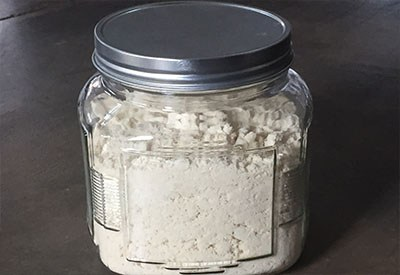
by Tammera J. Karr, PhD
My mother-in-law Libby (1918-2013) along with many other women in my family grew up in a generation of making do. For most of her adult life, Libby lived in remote or rural areas of the Pacific Northwest, including Crater Lake National Park, where my father-in-law worked as an equipment operator until his death in 1978.
I and my husband have lived remotely for over 35 years – My run to a local market involves 120 miles and a full day, and that is with great highways and spiffy vehicles. So having the hubby or myself running to the local market – even today is something you do not do for one or two items. I appreciate and value what was involved with keeping the cupboards stocked for these women who came before me, raising families in their day.
One of Libby’s faithful recipes kept in a small white card file is for Bisquick. Like many of my generation, Bisquick was an always present multi-purpose product in the pantry. It provided us with biscuits, pot-pies, muffins, dumplings, pancakes and more in a flash from its golden box.
A little history
On a late evening in the 1930’s, General Mills salesman Carl Smith was on a train to San Francisco, CA, he found the dining car was closed, and he was hungry. Smith asked the train’s chef if he might make something quick, nothing fancy and not too much trouble.
The train’s chef served Smith a plate full of piping hot biscuits. When Carl asked how the chef produced them so quickly, the chef revealed his secret – a pre-mixed blend of lard, baking powder, flour and salt that he stored in an ice chest. From that batter, the chef could whip up delectable, homemade biscuits in a matter of minutes.
Smith recognized the potential of a pre-mixed baking product, something that did not commercially exist yet in the 1930s. Early advertising was aimed squarely at women with messages telling them their Bisquick biscuits could even beat their mother-in-law’s homemade fare, and their husbands would never know the difference. The messaging worked and carried the product cleverly through the years. It didn’t take long for America’s home cooks and bakers to find new and creative uses for Bisquick mix .
Cakes, cookies, breads, “Impossible” brunch and dinner bakes and even churros populated dedicated Bisquick cookbooks in the 1960s through the 1980s. In 1981, the World’s Largest Peach Shortcake was created at the South Carolina Peach Festival. It was five layers and measured 25 1/2 feet in diameter. More than four tons of Bisquick and nine tons of peaches were used. [1]
Back Home
In Libby’s cupboards were always antique glass jars of flours, herbs, spices and powdered milk. I need to point out here – the jars were new when Libby put them to work as storage containers. Time in her cupboard made then antique. I have compared this recipe with those of my husbands aunts and grandmother. It is possible these ladies all started  making a homemade version, during the 1940’s and 1950’s. Additionally, I have found versions of this in my great grandmothers Range cookbook from 1906. While General Mills believed they had stumbled onto a New product, in reality, it may have been standard to find a crock, jar or tin of baking mix in many western pantries, where food had to be made fast when hungry men or families descended onto the kitchen like locusts.
making a homemade version, during the 1940’s and 1950’s. Additionally, I have found versions of this in my great grandmothers Range cookbook from 1906. While General Mills believed they had stumbled onto a New product, in reality, it may have been standard to find a crock, jar or tin of baking mix in many western pantries, where food had to be made fast when hungry men or families descended onto the kitchen like locusts.
For years I have used organic butter or locally sourced lard, instead of shortening, and have moved to spelt or gluten-free flours. However, butter requires an airtight glass container that can go in the refrigerator or freezer. You can use coconut, red palm or avocado oil if space is limited or you need a room temperature stable mix. Do not try and make up too much of the mix at one time, as even these oils turn rancid over time on pantry shelves.
Best part of all is that it can be made in minutes with your mixer, Vitamix or food processor.
Libby’s Bisquick (baking mix) Mix
INGREDIENTS:
4 1/2 cups white Spelt flour or Bob’s Red Mill All purpose GF flour
¾ cups buttermilk blend powder
2 1/2 tablespoons baking powder
½ teaspoon baking soda
1 1/2 teaspoons Celtic salt
2 Tablespoons coconut sugar
1 teaspoons cream of tartar
1 cup organic lard, Coconut or Red Palm Oil
INSTRUCTIONS:
To Sustainable goodness, real food, and health
[1] https://blog.generalmills.com/2015/04/how-bisquick-got-its-start/